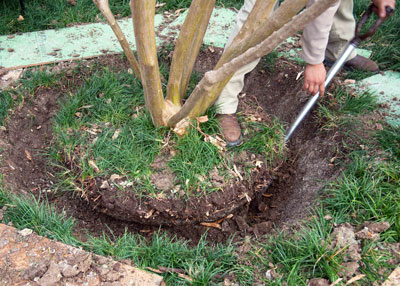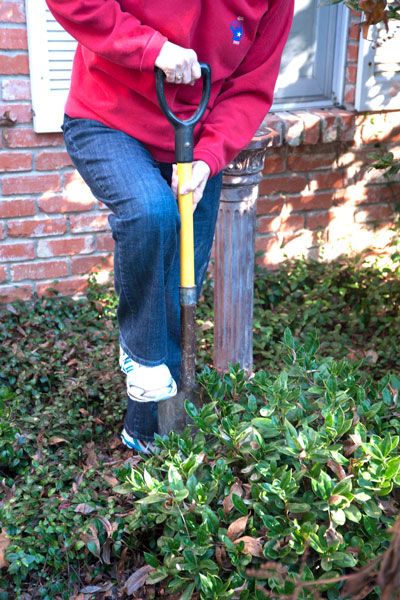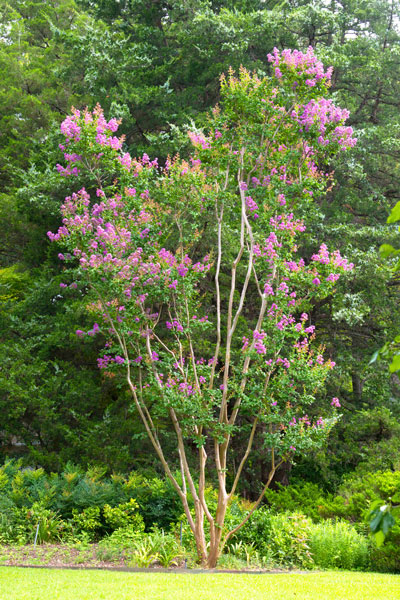Question of the Week: February 8, 2018
“Is it too late to transplant a couple of trees and shrubs that are in the wrong places?”
Folks sometimes get the terms “planting” and “transplanting” confused. I use “planting” to refer to going to the nursery, buying a plant, bringing it home and planting it into the landscape. In that usage, it doesn’t matter if the plant was grown in a container or if it was dug out of a field. This can be done at any time of the year.

Photo: Large Catawba crape myrtle had been overtaken by pecans and red oaks and needed to be moved to a sunnier location. We spent two hours carefully preparing the soil ball.
“Transplanting” by comparison refers to the act of digging a plant that was formerly growing in one location and actually moving it to another. And that’s the process to which I’m referring with my answer today.
Transplanting needs to be done when a plant is dormant, that is for woody plants, when it’s not leafed out and growing. In simple English, you need to do it in winter. In the Queen’s English of Larry the Cable Guy, “Get ‘er done!”
Steps to successful transplanting…
Moving a tree or shrub? Here are your keys to doing it right.
• Dig while it’s dormant. (Already covered that one.)
• Know your limitations. Most homeowners can move plants up to 2 inches in diameter. Larger plants probably need power equipment and professional experience.

Photo: Carissa holly is about to be moved to a different location. The process is the same as outlined for larger trees.
• Use a sharpshooter spade to dig a trench around the plant to sever the lateral roots cleanly.
• Create a soil ball that is 14 inches in diameter for a 1-inch trunk and 16 inches for 2-inch trunk.
• Hold the soil tightly in place around the root ball as you dig. Take your time and exercise patience.
• If you are going to be transporting the plant any distance, wrap the soil ball tightly in untreated burlap.
• Carry the plant by the soil ball, not by grasping its trunk.
• Dig the planting hole to the same depth and width as the ball of soil. If you dig it deeper than necessary, the soft soil will compact and the plant will settle farther down than you really want it.
• Set the plant at the same depth at which it was growing originally. If you’re planting into a poorly draining location, set the soil ball “high” by about an inch to keep the surface roots up and out of the water table as much as possible. Leave burlap in place. It will decay and roots will grow through it.
• Remove 25 to 50 percent of the top growth to compensate for roots lost during the digging. Do so by thinning out excess branching, also by removing damaged or unwanted branches.
• Be sure the plant is sitting vertically in its new home. Stake and guy it as necessary. Protect the trunk from rubbing and girdling by the guy wires and keep them taut at all times.
• Construct a watering berm with the excess soil. Water right after transplanting, and fill it with water every three or four days during the growing season until the new plant becomes established.

Photo: Just a couple of years later the crape myrtle was celebrating its new home by growing and blooming well. Good times are ahead!
